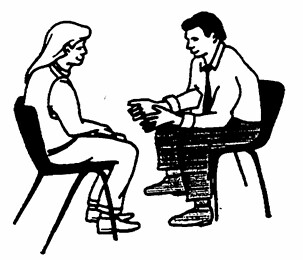1.Hospice patients still receive care for illnesses

A patient in hospice care may still receive treatment for an illness they have. Simply because someone has a life threatening illness, or is elderly and close to the end of their life, does not mean they stop receiving care. For example, a patient with cancer who contracts strep throat will still receive care for their strep throat. (Hopkins, 4/28/2016)
2.Social Workers help not only elderly or dying patients, but also their families

Family members of patients may often be overcome with grief. Anticipatory grief may occur for example as a spouse or relative prepares for the passing of a loved one. A social worker therefore may provide the spouse or relative with help in dealing with their experienced grief. (Hopkins, 4/28/2016)
3.There is a growing increase for gerontological social workers

As the population increases, as well as advances in medicine are made, the elderly population has increased. Therefore, social workers are needed to provide care for the growing population. Social workers additionally may help prepare people for the psychological changes of life after retirement. (DiNitto & McNeece, 2008)
4. Social Workers help prevent elderly abuse

Neglect is one of the most common forms of elderly abuse. The elderly may be subjected to physical or psychological abuse, but sometimes may not be able to speak out due to illness (such as dementia). Suspicion of elder abuse is something that must be reported in most states. Social workers may advocate on behalf of the elderly to increase education, so as to prevent abuse from occurring. (Class Lecture, 4/26/2016)
5.Appropriate way for social workers to talk to clients

If the family member of someone who is dying,or who has passed away, is talking to a social worker, there is a proper way for the social worker to help them address their grief. A social worker should not say that “they know exactly what the person is going through”. This is because a social worker would not want to devalue their loss by saying this. Instead, a social worker can acknowledge that they understand the situation they are going through, but still focus on the clients current situation and grief. (Hopkins, 4/28/2016)
6.Social workers help the elderly receive proper healthcare

Considering both hearing and vision loss the elderly may face, social workers make sure that communication between the elderly and healthcare providers is optimal. Scheduling of appointments, as well as transportation to appointments, may be aided by social workers, who speak as advocates for the elderly to ensure these services are provided. Social workers also help the elderly to properly pay for their healthcare visits, through their extensive knowledge of medicare and medicaid for example. (DiNitto & McNeece, 2008)
by David Montes
References
DiNitto, D. M., & McNeece, C. A. (2008). Social Work: Issues and opportunities in a challenging profession. Chicago, Il.: Lyceum Books, (3rd Edition).
Hopkins, Sarah. Class Lecture, 4/28/2016.
Vassello, John. Class Lecture, 4/26/2016.














































 America has come to be known globally for its prison system, as we have one of the highest incarceration rates in the world. Additionally, around 7.2 million Americans are under some form of correctional supervision. (Vassello, 2016)
America has come to be known globally for its prison system, as we have one of the highest incarceration rates in the world. Additionally, around 7.2 million Americans are under some form of correctional supervision. (Vassello, 2016)

You must be logged in to post a comment.